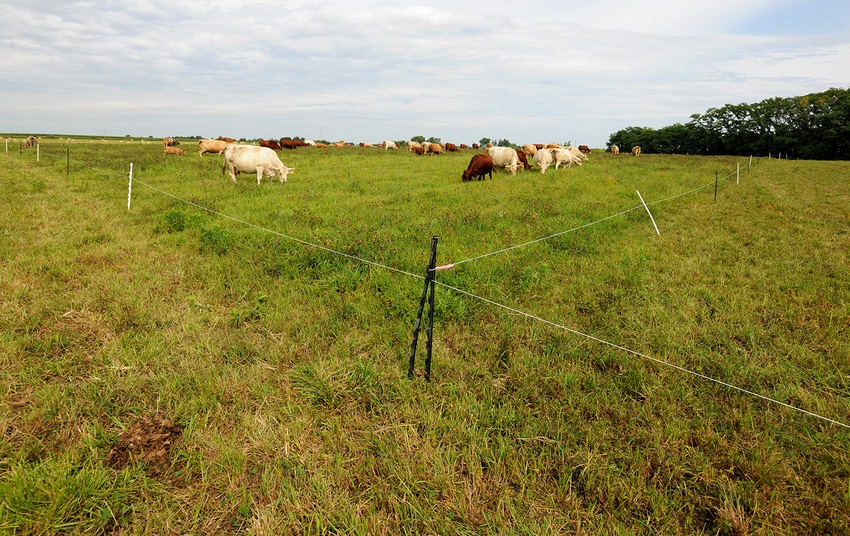
For the first time, Iowa’s private landowners have the opportunity to implement selected resource conserving practices on their land using a higher-than-normal payment rate through USDA’s Environment Quality Incentives Program (EQIP).
USDA’s Natural Resources Conservation Service (NRCS) will now offer higher payment rates for 20 practices to eligible farmers statewide. In the past, the highest financial assistance rates through EQIP were reserved for Iowa’s historically underserved farmers, such as beginning farmers and veterans, and for special land targeted initiatives.
Goal is to improve water quality, soil health, wildlife habitat
“This is a group of the most environmentally beneficial practices in treating our priority resource concerns in Iowa,” says Kurt Simon, state conservationist for NRCS in Iowa. “Many of the practices were chosen due to the public benefit they provide.”
NRCS priorities in Iowa include improving water quality, soil health and wildlife habitat on private lands, says Simon. “We are committed to supporting Iowa’s Nutrient Reduction Strategy to help improve water quality in the state as well as provide excellent technical assistance to help farmers improve soil conditions. Many of these practices would also provide much needed wildlife habitat, which is declining across the state.”
These practices offer the highest EQIP payment rate in Iowa
Practices eligible for the highest EQIP payment rate in Iowa include: access control, conservation cover, conservation crop rotation, constructed wetland, denitrifying bioreactor, drainage water management, early successional habitat development, forage and biomass planting, forest stand improvement, prescribed burning, prescribed grazing, riparian forest buffer, riparian herbaceous cover, saturated buffer, streambank and shoreline protection, tree or shrub establishment, upland wildlife habitat management, wetland restoration, windbreak/shelterbelt establishment and windbreak/shelterbelt renovation.
To learn more about these practices and planning conservation activities on your land, contact your local NRCS office or go to ia.nrcs.usda.gov and Conservation Choices.
USDA partners with farmers to protect more than 500,000 acres of working grasslands
In other news, USDA on November 30 said it will accept over 504,000 acres that were offered by producers during the recent ranking period for the Conservation Reserve Program (CRP) Grasslands enrollment. Through the voluntary CRP Grasslands program, grasslands threatened by development or conversion to row crops are maintained as livestock grazing areas, while providing important conservation benefits.
USDA will accept more than 2,100 offers totaling more than 504,000 acres across 34 states. Over 70% of the acres are from beginning farmers, veterans and underserved producers. About two-thirds of the acres are in counties with the highest threat for conversion. Additionally, nearly 60% of the acres are in wildlife priority areas and three-fourths of the acres will have a wildlife-focused conservation plan as part of the farm.
“This 15-year commitment on more than half a million acres demonstrates that voluntary, incentive-based conservation methods benefit producers and help to preserve our natural resources,” says USDA Deputy Undersecretary Alexis Taylor. “Combining conservation and wildlife benefits, while still supporting livestock production, is a clear example of how agriculture and conservation can go hand-in-hand.”
USDA is still accepting additional offers for CRP Grasslands
USDA is also reminding producers that it is still accepting additional offers for CRP Grasslands. The current ranking period that closes on Dec. 16, also includes a new CRP Grasslands practice specifically tailored for small-scale livestock grazing operations to encourage broader participation. Small livestock operations with 100 or fewer head of grazing dairy cows (or the equivalent) can submit applications to enroll up to 200 acres of grasslands per farm.
USDA’s goal is to enroll up to additional 200,000 acres. The new practice for small-scale livestock grazing operations encourages greater diversity geographically and in all types of livestock operation. Small livestock operations are encouraged to contact their local Farm Service Agency office to learn more about this program before Dec. 16, to be considered as part of the current ranking period.
This program allows use of the land for livestock production
Participants in CRP Grasslands establish or maintain long-term, resource-conserving grasses and other plant species to control soil erosion, improve water quality and develop wildlife habitat on marginally productive agricultural lands. CRP Grasslands participants can use the land for livestock production (grazing or producing hay), while following their conservation and grazing plans to maintain the cover.
A goal of CRP Grasslands is to minimize conversion of grasslands either to row crops or to non-ag uses. Participants can get annual payments of up to 75% of the grazing value of the land and up to 50% to fund cover or practices like cross-fencing to support rotational grazing or improving pasture cover to benefit pollinators or other wildlife.
USDA will select offers for enrollment based on six ranking factors
Those factors are: (1) current and future use, (2) new farmer/rancher or underserved producer involvement, (3) maximum grassland preservation, (4) vegetative cover, (5) environmental factors and (6) pollinator habitat. Offers for the second ranking period also will be considered from producers who submitted offers for the first ranking period but were not accepted, as well as from new offers submitted through December 16.
About the Author(s)
You May Also Like




